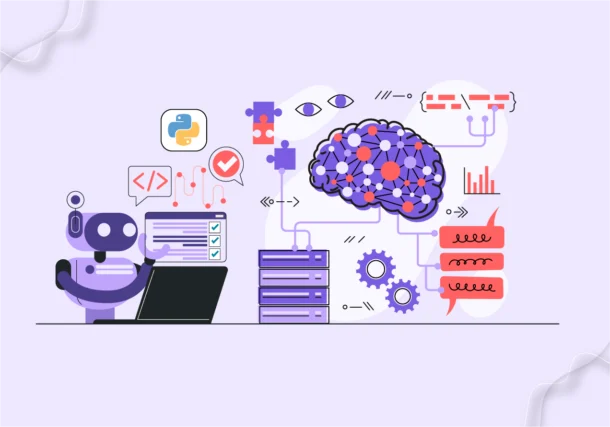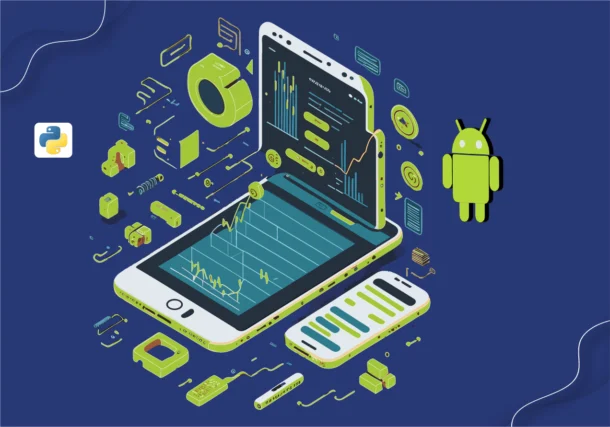Microscopic View of Python for IoT Application
Python is the most popular high-level programming language that majorly focuses on the readability of code. It supports multiple programming platforms and usually consists of only fewer steps than Java and C. On the other hand, we explore the terminology IoT; which stands for Internet of Things, which refers to the network of any physical devices or appliances integrated with sensors, software, and network connectivity that allows them to collect and share data. But what if these two peas of pods combine and work together?
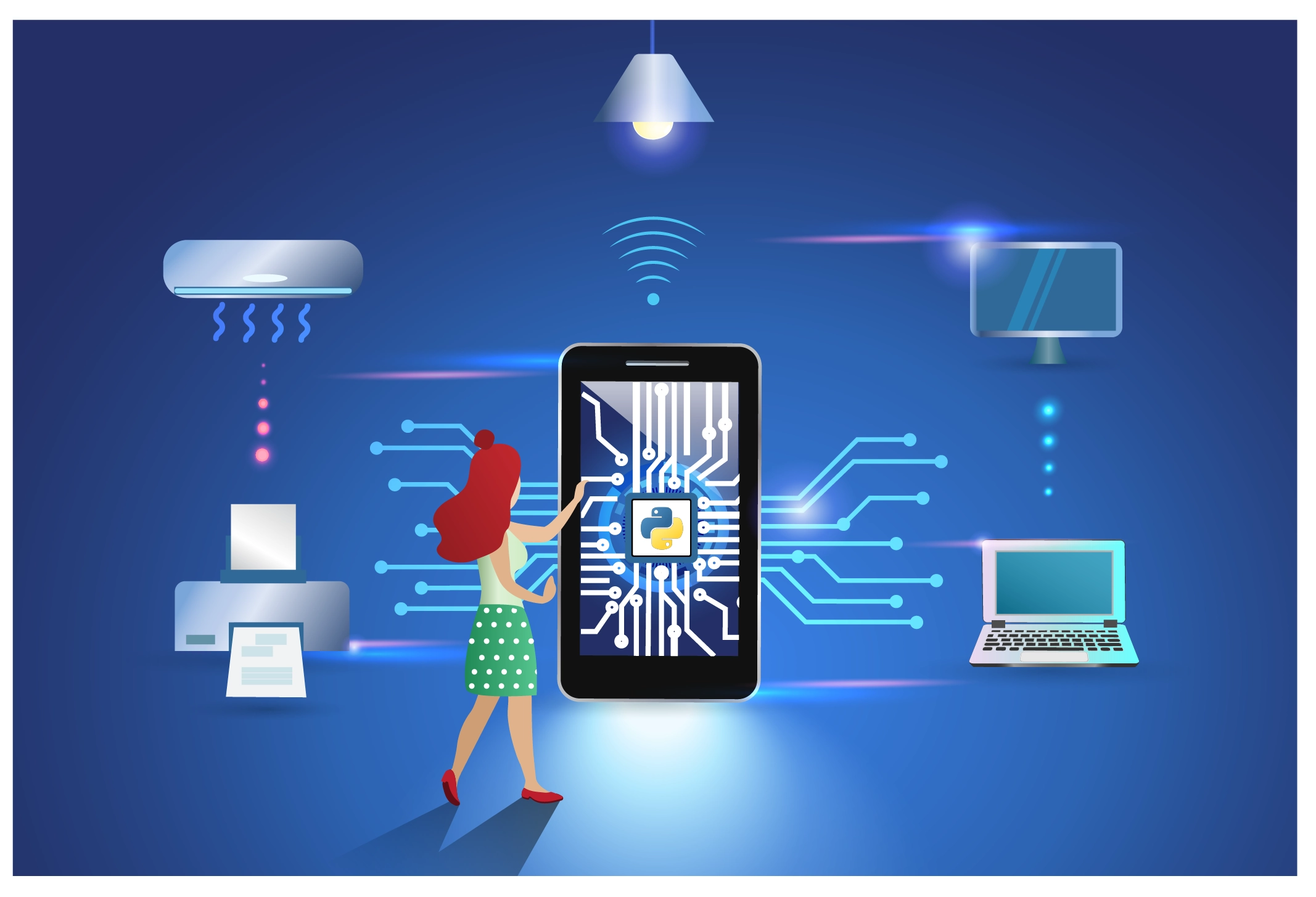
One interesting fact about IoT-based software is that it is used and built by some most popular and demanding development languages, among one of those are Python. Python for IoT is used for developing several other IoT applications; since Python is straightforward to learn and use and with its feature of expressive and integrated coding language it provides flawless code readability. Moreover, Python’s flexibility can be easily integrated into several other applications, making it more remarkable than other programming languages.
Additionally, Python for IoT development projects offers smooth, and customized development software programs and systems. But if you eagerly wish to learn more about how Python can be beneficial for IoT development projects, then you are at the right platform. In this blog, we will be exploring every area of Python for developing IoT projects along with gaining some basic ideas about
Python and IoT projects. Further, we will also take a microscopic view of the added benefits of using Python in IoT projects along with some roles of Python. But this is not the end of this blog, we will also be walking down the roads of Python libraries that are used for IoT projects. So let’s dive deeply into this topic to discover more!
Discover what is Python and IoT (Internet Of Things)
Python is a widely used programming language that is object-oriented and the most easiest and dynamic programming language which is widely used in many software industries. Often this programming language is used for developing web applications and software development. Due to its easiest syntax, it is highly recommended for all beginners who are new to this field. Moreover, presently Python is used in many cases like data science, machine learning, and IoT development processes.
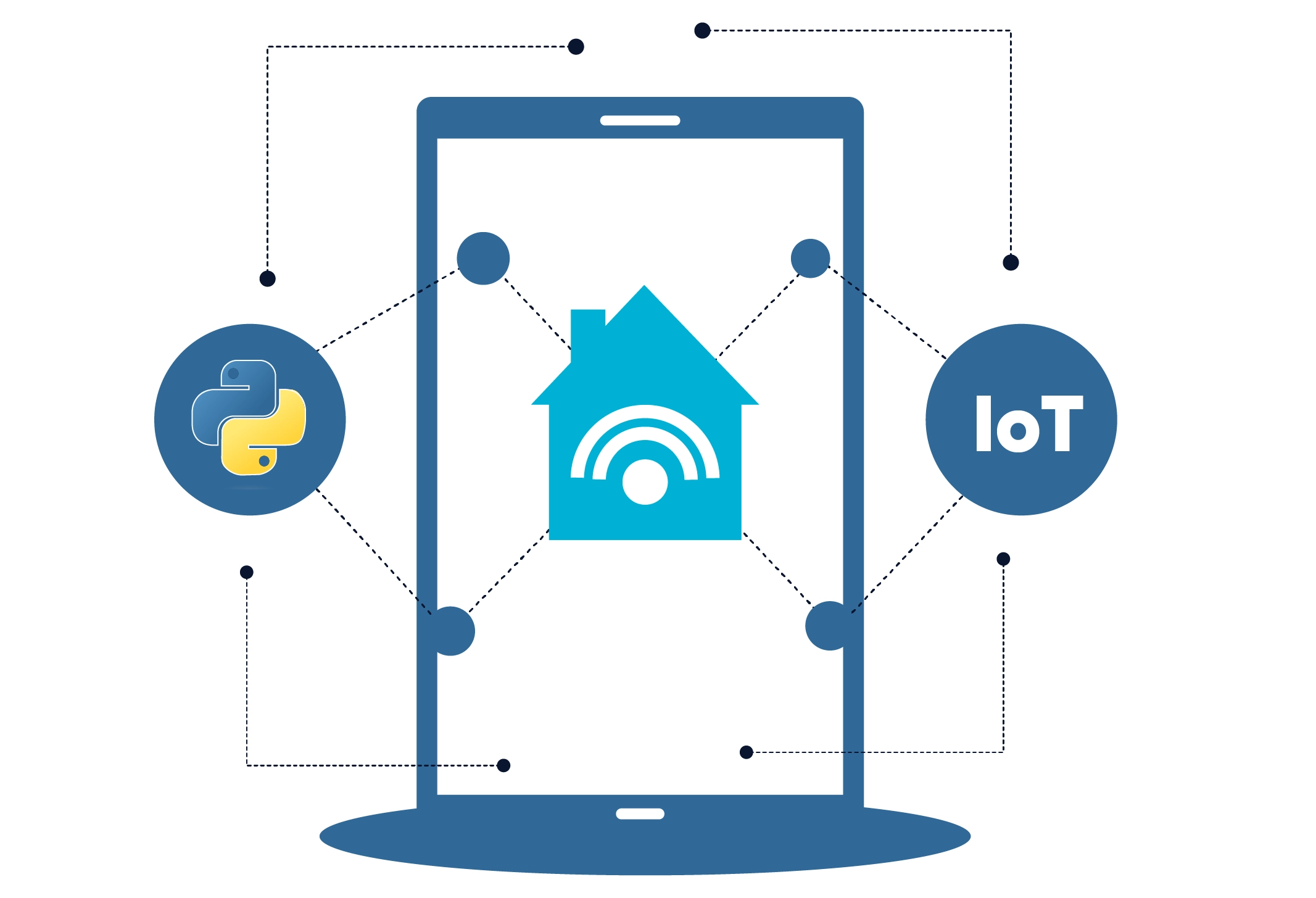
Also, Python offers a large community support along with a rich library that has all the kinds of frameworks for the backend, and frontend. On the other side of the plate, IoT, or the Internet of Things, refers to the network of any physical objects or “things” that is integrated with any sensor, software, and other technologies to connect and exchange data with other devices and systems over the internet.
These objects can range from simple household items like smart thermostats and appliances to complex industrial machinery. The goal of IoT is to enable these objects to collect and exchange data, automate tasks, and improve efficiency, convenience, and overall quality of life. As mentioned in the above paragraph, python with IoT serves as a great companion for all IoT development projects. Python offers a rich set of tools along with libraries that entirely simplify IoT development. Moreover, python is cross-platform, which means that coding can be done or written in Python and run on various operating systems including Windows, and macOS. This versatility is advantageous in IoT where all the devices may have different hardware and software configurations.
Pioneering Python; The Ultimate Choice for IoT
Let’s now see why Python is considered in most IoT projects. Python for IoT is widely used, due to Python’s simplicity and readability which makes it easier for any developer to learn and use, especially for those who are new to programming or IoT development. Python reduces the IoT project’s development time and complexity with its clean and concise syntax. Moreover, python has a rich ecosystem of libraries and frameworks specifically that are designed for developing IoT projects. Python libraries like Pycom/PyBoard, Raspberry Pi GPIO, Adafruit IO, etc which are used for handling all the crucial tasks in IoT applications.
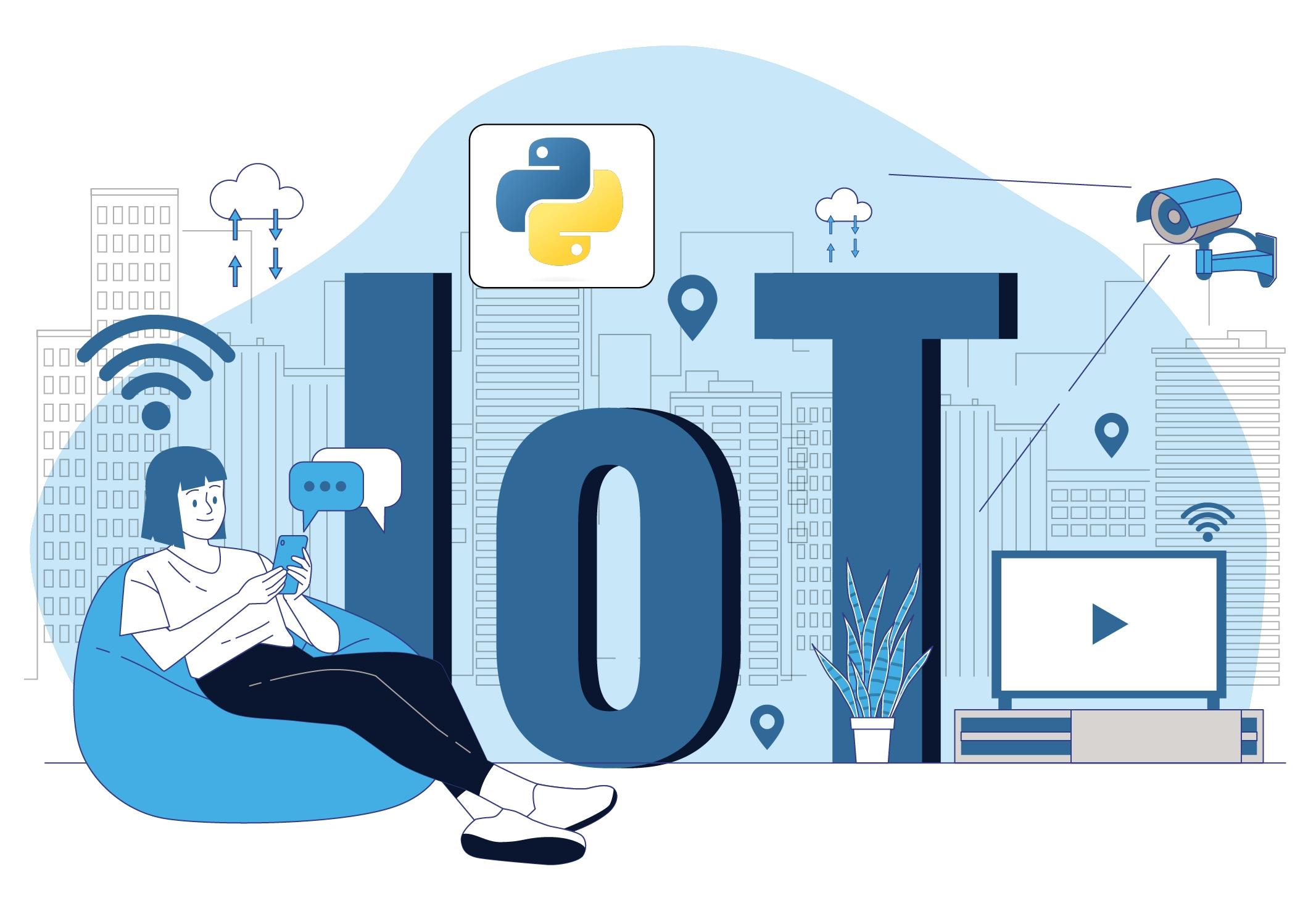
Python also has a large and active community of developers who actively contribute to its growth and offer support through forums, tutorials, and open-source projects. This community makes sure that all the developers can easily find the solution they are seeking for their respective problems and stay updated with the latest trends and best practices in IoT development.
Moreover, Python’s versatility offers flawless integration with other technologies commonly used in the IoT ecosystem like MQTT for messaging, REST APIs for communication, and so on. Moreover, Python has an interpreted nature and dynamic typing that entirely makes it a deal for rapid prototyping and iterative development, which allows developers to quickly test all the ideas and make changes without any need for any lengthy compilation cycles.
While Python is often criticized for its performance compared to lower-level languages like C or C++, advancements in JIT (Just-In-Time) compilation and optimization techniques have significantly improved its performance. Additionally, Python for IoT development makes it easy for any integration with high-performance languages that allow developers to optimize the critical section of code while utilizing Python’s productivity benefits for the rest of the IoT application.
Elevating the Python Libraries for IoT Development
Now let’s discuss the Python libraries that have been used for IoT projects. The first one is Pycom or PyBoard library used for developing all the IoT projects making it to micro control the boards making the development process of IoT with Python highly efficient. Another library of Python with IoT is the Raspberry Pi GPIO, known as a mini-computer that allows developers to interface all the hardware using Python through its GPIO (General Purpose Input/Output) pins.
Adafruit IO is another Python library for IoT development that entirely provides a platform for exchanging data between IoT devices and applications using Python. Another Python library is Twisted; an event-driven networking engine written in Python, which includes support for various IoT protocols such as MQTT, CoAP, and more.
Blynk is another Python for IoT development library that is used for building IoT applications that provide a drag-and-drop interface for controlling all the hardware with smartphones. The Blynk Python library allows the connection of any IoT hardware to the Blynk cloud service. MQTT, a client library in Python offers better communication between devices and servers in IoT applications. Also, MQTT is a lightweight messaging protocol for small sensors and mobile devices, optimized for high-latency or unreliable networks for all IoT applications.
Orchestrating the Role of Python in IoT Projects
The major role of Python for IoT development is Python’s support towards cloud services that completely allows developers to integrate IoT devices with cloud platforms for data storage, management, and analytics. A few libraries like Boto 3 for AWS integration and Google Cloud for Google Cloud Platforms make it easier to interact with cloud services from Python code running on IoT devices. Also, Python’s popularity in the field of machine learning and artificial intelligence makes it a natural choice for integrating these technologies into IoT solutions. Many developers make use of Python libraries like TensorFlow, and Scikit-learn to implement predictive analytics, and other AI-driven functionalities in IoT applications.
Moreover, python can run on microcontrollers and single-board computers commonly used in IoT devices, such as Raspberry Pi, Arduino, and ESP8266. This allows developers to build IoT solutions using affordable and widely available hardware. Also, Python with IoT is platform-independent, meaning it can run on various hardware platforms and operating systems commonly used in IoT devices. This flexibility simplifies the development process, as the same codebase can be deployed across different devices without modification.
Clouding the Thoughts of Python for IoT Development with Pattem Digital
Closing the chapter here, as we have seen Python stands out as a very powerful asset for developing IoT projects. It offers a wide range of benefits that streamline the process and boost the entire project outcomes. Python’s simplicity, readability, and extensive library support make it an ideal choice for both beginners and seasoned developers, entering into the IoT landscape. Moreover, Python’s compatibility with diverse hardware platforms and operating systems further solidifies its position as a versatile tool for building innovative and scalable IoT solutions. Moreover, its integration with cloud services, machine learning, and artificial intelligence technologies enriches the capabilities of IoT applications, paving the way for smarter, more efficient systems that positively impact various industries and domains.
As we navigate the dynamic landscape of IoT development, companies like Pattem Digital, a leading Python development company play a pivotal role in driving innovation and excellence. With a focus on leveraging innovative technologies and fostering creativity, Pattem Digital stands as a beacon of ingenuity in this parallel world. Through their expertise and dedication, they empower businesses to harness the full potential of Python for IoT development, catalyzing growth and success in an increasingly interconnected world.




